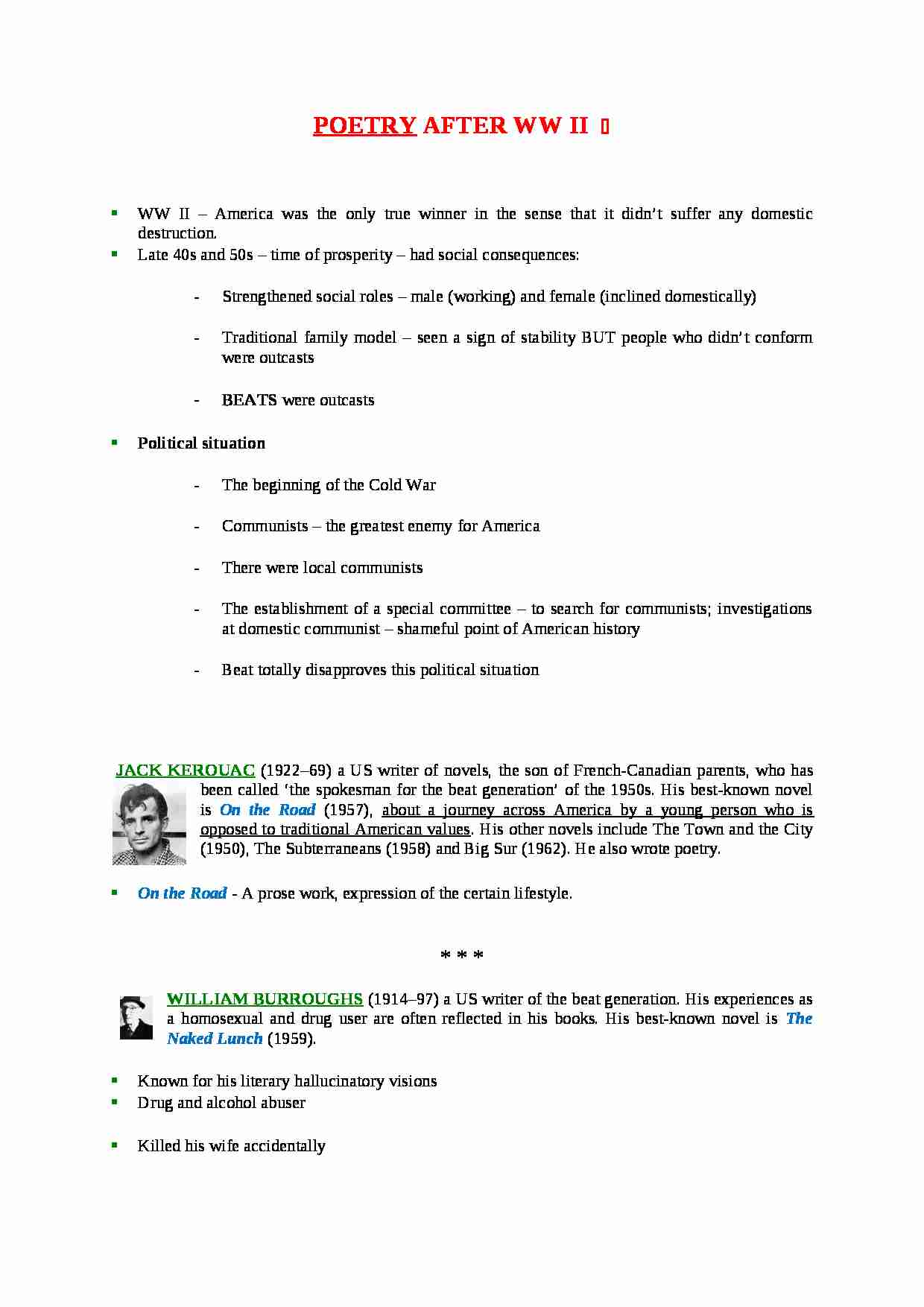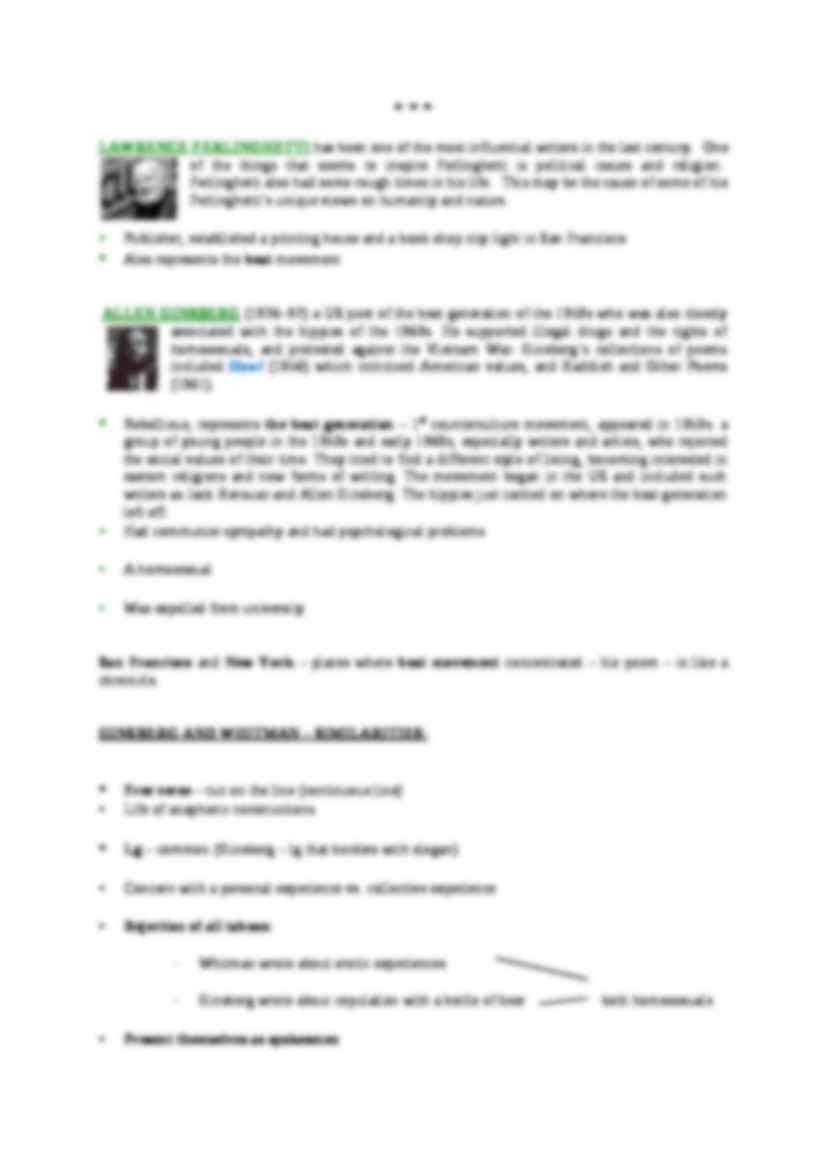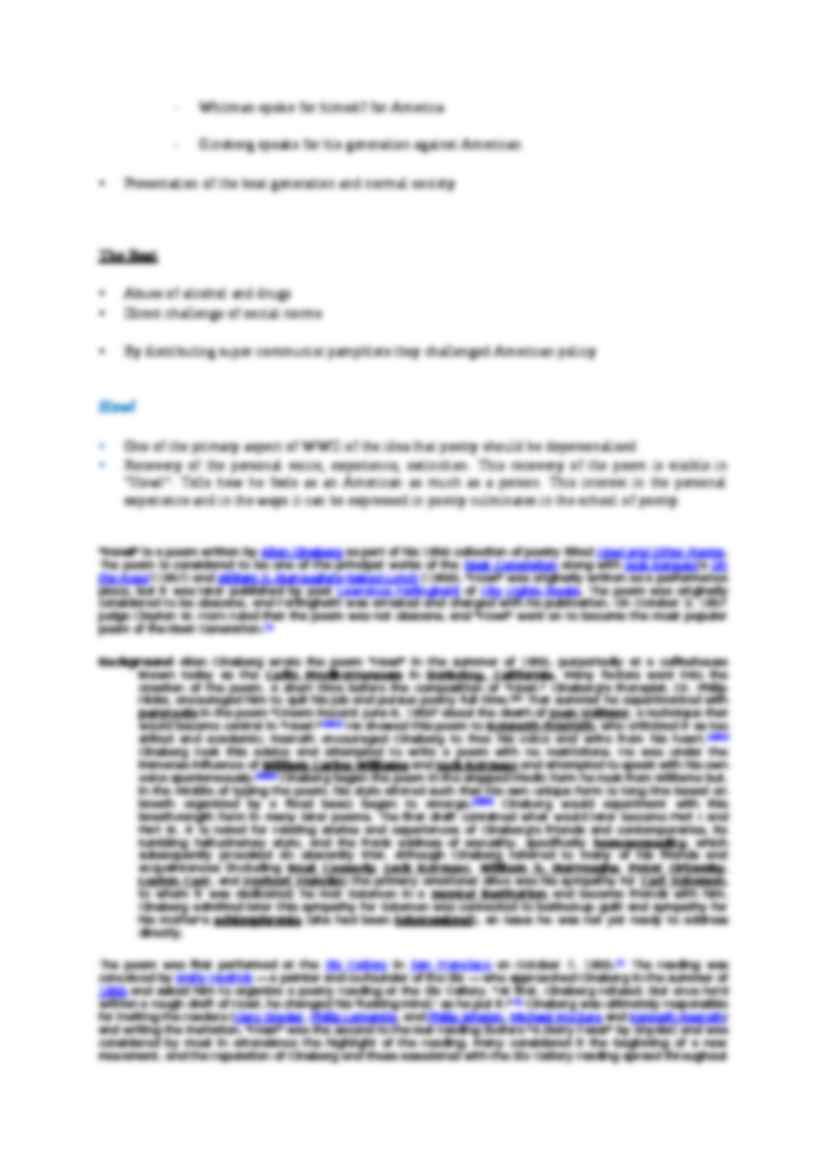To tylko jedna z 6 stron tej notatki. Zaloguj się aby zobaczyć ten dokument.
Zobacz
całą notatkę



POETRY AFTER WW II WW II - America was the only true winner in the sense that it didn't suffer any domestic destruction.
Late 40s and 50s - time of prosperity - had social consequences:
Strengthened social roles - male (working) and female (inclined domestically)
Traditional family model - seen a sign of stability BUT people who didn't conform were outcasts
BEATS were outcasts
Political situation
The beginning of the Cold War
Communists - the greatest enemy for America
There were local communists
The establishment of a special committee - to search for communists; investigations at domestic communist - shameful point of American history
Beat totally disapproves this political situation
Jack Kerouac (1922-69) a US writer of novels, the son of French-Canadian parents, who has been called `the spokesman for the beat generation' of the 1950s. His best-known novel is On the Road (1957), about a journey across America by a young person who is opposed to traditional American values. His other novels include The Town and the City (1950), The Subterraneans (1958) and Big Sur (1962). He also wrote poetry.
On the Road - A prose work, expression of the certain lifestyle.
* * *
William Burroughs (1914-97) a US writer of the beat generation. His experiences as a homosexual and drug user are often reflected in his books. His best-known novel is The Naked Lunch (1959).
Known for his literary hallucinatory visions
Drug and alcohol abuser
Killed his wife accidentally
* * *
Lawrence Ferlinghetti has been one of the most influential writers in the last century. One of the things that seems to inspire Ferlinghetti is political issues and religion. Ferlinghetti also had some rough times in his life. This may be the cause of some of his Ferlinghetti's unique views on humanity and nature.
Publisher, established a printing house and a book shop city light in San Francisco
Also represents the beat movement
Allen Ginsberg (1926-97) a US poet of the beat generation of the 1950s who was also closely associated with the hippies of the 1960s. He supported illegal drugs and the rights of homosexuals, and protested against the Vietnam War. Ginsberg's collections of poems included Howl (1956) which criticized American values, and Kaddish and Other Poems (1961).
Rebellious, represents the beat generation - 1st counterculture movement, appeared in 1950s. a group of young people in the 1950s and early 1960s, especially writers and artists, who rejected the social values of their time. They tried to find a different style of living, becoming interested in eastern religions and new forms of writing. The movement began in the US and included such writers as Jack Kerouac and Allen Ginsberg: The hippies just carried on where the beat generation left off.
(…)
… Lights Bookstore and the City Lights Press. Ginsberg completed Part II and the "Footnote" after Ferlinghetti had promised to publish the poem. "Howl" was too short to make an entire book, so Ferlinghetti requested some other poems. Thus the final collection contained several other poems written at that time; with these poems, Ginsberg continued the experimentation with long lines and a fixed base he'd…
…, discovered in summer 2007 on a reel-to-reel tape in the Reed College archives, contains only Part I of "Howl." After beginning to read Part II, Ginsberg said to the audience, "I don't really feel like reading anymore. I just sorta haven't got any kind of steam."[10]
Overview and structure of "Howl"
The poem consists of three parts, with an additional footnote.
Part I Called by Ginsberg, "a lament for the…
… had written his Sonnets to Chris in 1947, although they were not to be published until 1967 (and then as Berryman's Sonnets).[4] Berryman's sonnet sequence fits in the long tradition of highly personal sonnet sequences, stretching back through George Meredith's Modern Love to William Shakespeare's sonnets and the sonnets of Petrarch. The difference between the long tradition of intimate, personal…
... zobacz całą notatkę






Komentarze użytkowników (0)